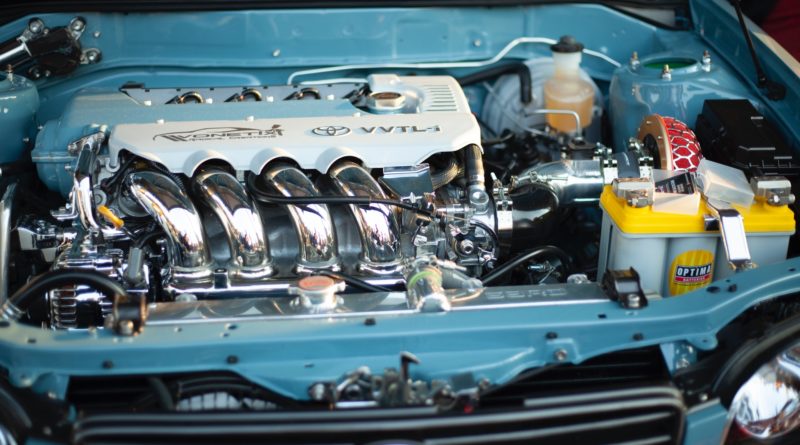How a Car Engine Works – The Simple Answer
Learn how car engines work from start to finish all with one easy, simple guide from the experts. Car engines are the fundamental powerhouse of driving, and how they work is something that should be understood by everyone. They are one of the most practical inventions of mankind, and most of us take them for granted in some form or another every single day. They are extremely complex mechanisms at a glance, but realistically, learning how to understand them is a lot more simple. You just need to understand a few key principles. What is remapping.
The fundamentals
Before we go and dive right into how engines function from the inside, let’s have a quick whistle-stop tour at the generic working of an engine. It all happens in the blink of an eye, but it’s pretty impressive stuff. Remember though, this is a generalisation of how an engine works, and it does differ for different engines.
From the most general point that we can possibly find, your internal combustion engine works by burning fuel to create a small explosion. This then creases a force to turn a crankshaft that we use to turn your axels. That’s how we create the power to push us forwards. Different forces are created through this happening at different speeds, and in different engines, by how many times this can happen all at once. See how to check cambelt.
4 Stroke Engine System
Getting more granular with how car engines work, we need to look more into the process we just glanced over above. All of that is happening, but it goes to a much more specific level when we look at each area of operation. Generally, we call each part of this process a stroke, and most internal combustion engines operate on a 4-stroke system. See what engine size is right choice.
Those are:
- Intake
- Compression
- Power
- Exhaust
Each of them has a vital role to play in the working of your engine and also helps to maximise efficiency and stability too. Let’s dig a little bit deeper.
Intake
First of all, to get all of this to even happen in the first place, we need the intake stroke. This is how we get enough air into the cylinder to start the whole thing going. This is done by an intake valve opening and pulling in air as a result.
Air is essential to the workings of a car engine, as it is essential for how combustion works. Without it, we wouldn’t get very far. It’s all about getting the best burn that we can. That is why fuel injection systems or carburettors are important too, as this is the other half of combustion – fuel.
Compression
Stroke number two is with compression. Having a load of air floating around isn’t much good after all. We need to get it into a state where we can really use it to build up some power. To allow it to do that, we need to make sure that it is compressed.
As the air is pulled in and the shaft turns with counterweights and other reactions, the piston head moves upward into the chamber, redoing the space that the air was in. As a result, the same amount of air in less space results in more pressure building up. This is compression, and we need it to get to the really exciting part.
Power
Stroke 3 is finally igniting the air we have now taken in and compressed. To do that, we mix it with fuel using the systems we mentioned above like fuel injection in most modern cars, and then we light it. A spark plug is located in the cylinder too, and this creases as part to light the mixture of air and fuel.
The result is an explosion that creates a huge force. This force forces the piston head down the cylinder, and this is what is turning the crankshaft. That’s arguably the most important stroke. There’s a huge amount of work going on, and it’s a massive movement of energy.
Exhaust
Lastly, we need to get the whole things ready to start again. The leftover gasses and any fuel or air leftover are still sitting in the cylinder, taking up space. That’s where we need our exhaust system to come in.
An exhaust valve opens to expel everything that was left. It all leaves through your exhaust system until it comes out of your exhaust pipe. The more efficient your car engine is, the less this happens. It’s also a good time to note that a turbo system fits in here perfectly too, as it helps put this expelled air to better use and makes the whole thing more efficient.
The Conclusion
All in all, that is the whole process of how a car engine works. The air and fuel are brought together, ignited, and expelled. Along the way, they build power with pushed down the piston in the cylinder that turns a crankshaft. This has a counterweight to help move things back up again, as well as the same thing happening in other cylinders at different times to keep it going in one smooth motion.
It also makes sense to mention now that this is why bigger engines have more power too and why it’s essential to find the best fit. The more cylinders available in an engine, to more times this happens all at the same time. The result is the potential for significantly greater power output and a much larger speed and horsepower as a result. That’s how bigger vehicles and performance-based vehicles operate as well. See how starter works.
If you need a hand
Car engines and how they work is complicated, so remember that there’s only so much you can do without getting the professionals involved. With so many moving parts, there’s always room for wear and tear and other things to go wrong. Every single part has a huge role to play, and it’s an extremely delicate balance to get the whole thing to operate and stay that way too. Car inspections are a great way to make sure you know what you’re getting and that everything is working as it should.
If you want our advice, get in touch today.
Buying a used VW. Buying used vauxhall, BMW, Jaguar, Ford, Volvo, Range rover, Bentley, Aston Martin, Porsche, Ferrari, Lamborghini, Maserati, Hyundai, Tesla, Honda, Pagani




